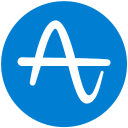On Building A Daily Check-In App For Seniors Living Alone
Hi, I’m Preet Anand. I lead Safety products at Lyft and I’m the President and co-owner of Snug, a friendly daily check-in service for people living alone. This might sound weird, but my life mantra is ‘perpetuating free will’. What that means to me is that I want the consequence of my work to be that people have more choices in their lives and can experience more freedom. This usually comes from the removal of risks but also by creating new products for unmet needs. And to be specific, when I say more choices, I want this to be more choices for lots of people - not just the wealthy.
Snug’s main customer base are seniors who are living alone (there are more than 20M in the USA), but we also have diabetics, those with recent mobility challenges, and other people living independently. Snug checks in on you every morning and reminds you to check-in at your selected daily check-in time. If you check in with the app, you get a positive quote of the day. If you don’t and are unresponsive after multiple reminders, your emergency contacts will be alerted with your location and authorities will be alerted to conduct a wellness check. We recently crossed 250,000 check-ins!

Download the report and join our email newsletter packed with business ideas and money-making opportunities, backed by real-life case studies.

Download the report and join our email newsletter packed with business ideas and money-making opportunities, backed by real-life case studies.

Download the report and join our email newsletter packed with business ideas and money-making opportunities, backed by real-life case studies.

Download the report and join our email newsletter packed with business ideas and money-making opportunities, backed by real-life case studies.

Download the report and join our email newsletter packed with business ideas and money-making opportunities, backed by real-life case studies.

Download the report and join our email newsletter packed with business ideas and money-making opportunities, backed by real-life case studies.

Download the report and join our email newsletter packed with business ideas and money-making opportunities, backed by real-life case studies.

Download the report and join our email newsletter packed with business ideas and money-making opportunities, backed by real-life case studies.














